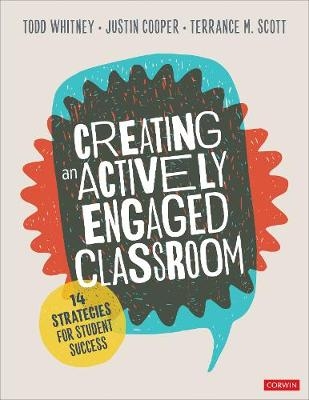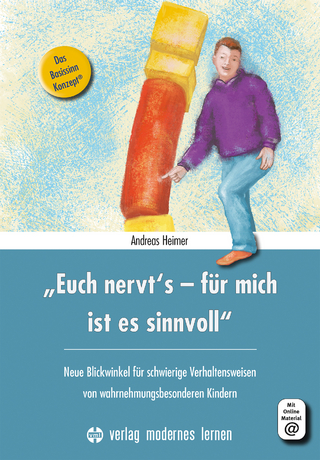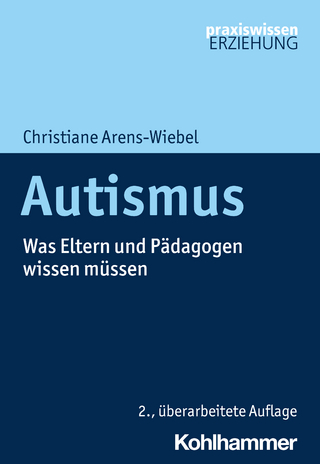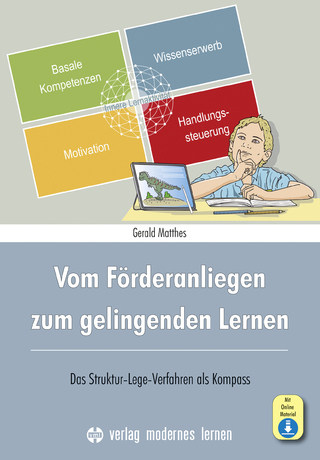
Creating an Actively Engaged Classroom
Corwin Press Inc (Verlag)
978-1-0718-2358-3 (ISBN)
Successful lessons are explicit, yet also inspire active learning and opportunities to respond. As the one shaping lessons, can you do better? Probably, and you’re not alone. Research shows teachers consistently offer students far fewer than the recommended opportunities to respond, leaving all students—including those with special needs and behavior challenges—less than engaged and falling short of their best chance for success.
With this book, you’ll discover 14 strategies you can translate directly to your classroom, complete with descriptions, advantages and disadvantages of each, and how and when best to use them. Divided into three parts, you will be guided through
Verbal engagement strategies, such as whip around, choral responding, quick polls, and individual questioning
Non-verbal engagement strategies, such as stop and jot, guided notes, response cards, and hand signals
Partner and teaming strategies, such as turn & talk, cued retell, four corners, and classroom mingle
Dive into these strategies and transform your classroom into a rich and interactive environment—no matter the subject, context, or age of your students.
Todd Whitney is an Assistant Professor of Special Education in the College of Education and Human Development at the University of Louisville. He received his Ph.D. in Special Education with an emphasis in learning and behavioral disorders from the University of Louisville. He has taught special education methods, assessment, and classroom management courses for almost 10 years across three universities (Kentucky and Tennessee). His research areas of interest include evidence-based academic and behavioral interventions for students with disabilities and the effective use of evidence-based instructional practices to increase student engagement. Justin T. Cooper is an Associate Professor and Assistant Department Chair in the College of Education and Human Development at the University of Louisville. He received his Ed.D. in Special Education with an emphasis in learning and behavioral disorders from the University of Kentucky. He is a Past President of the Council for Children with Behavioral Disorders, a division of the Council for Exceptional Children. He conducts trainings for schools and school districts in the area of effective instruction and behavior management. His research interests include teacher preparation, the effects of teacher behavior on student behavior, effective instructional strategies, functional behavioral assessment, and behavior intervention planning. Terrance M. Scott is a senior principal education researcher at the Stanford Research Institute (SRI). Before joining SRI in 2020, Dr. Scott spent 24 years as a professor and researcher in special education. He began his career as a counselor in residential treatment and has worked with students with challenging behaviors across a variety of settings. Since receiving his PhD in Special Education at the University of Oregon in 1994, Dr. Scott has written over 100 publications, has conducted well more than 1,000 presentations and training activities throughout the United States and across the world, and has successfully competed for more than $24 million in external grant funding. In 2004 he received the Distinguished Early Career Award from the Research Division of the International Council for Exceptional Children, and in 2012 he received the Outstanding National Leadership Award from the Council for Children with Behavior Disorders. He was elected president of this organization in 2013 and served as a two term editor of the journal, Beyond Behavior. His research interests focus on schoolwide prevention systems, the role of instructional variables in managing student behavior, functional behavior assessment/intervention, video-based training for school personnel, and scientific research in education.
Introduction: Student Engagement and Teacher Responsibility
Section I: Verbal Engagement Strategies
Whip Around
Quick Poll
Choral Responding
Individual Questioning Strategies for Student Response
Section II: Nonverbal Engagement Strategies
Stop and Jot
Guided Notes
Response Cards
Colored Choice
Multiple Choice
True/False
Response Slates and Whiteboards
Hand Signals
Fist to Five
Fingers for Numbers
Thumbs Up/Thumbs Down
Section III: Partner and Team Engagement Strategies
Turn and Talk
Cued Retell
Numbered Heads Together
Four Corners
Snowball
Classroom Mingle
Conclusion: Putting It All Together
Appendix
A. Stop-and-Jot Template—Elementary
B. Stop-and-Jot Template—Secondary
C. Response Card Templates
D. Fist-to-Five Visual
E. Thumbs Up/Thumbs Down Visual
F. Thumbs Up/Thumbs Down/Thumbs Sideways Visual
G. Cued-Retell Sheet
H.OTR Data Collection Form—Overall OTR Only
I. OTR Data Collection Form—Individual/Group OTR–Specific Strategies Used
References
| Erscheinungsdatum | 13.07.2021 |
|---|---|
| Verlagsort | Thousand Oaks |
| Sprache | englisch |
| Maße | 177 x 254 mm |
| Gewicht | 340 g |
| Themenwelt | Sozialwissenschaften ► Pädagogik ► Sonder-, Heil- und Förderpädagogik |
| ISBN-10 | 1-0718-2358-2 / 1071823582 |
| ISBN-13 | 978-1-0718-2358-3 / 9781071823583 |
| Zustand | Neuware |
| Informationen gemäß Produktsicherheitsverordnung (GPSR) | |
| Haben Sie eine Frage zum Produkt? |
aus dem Bereich


